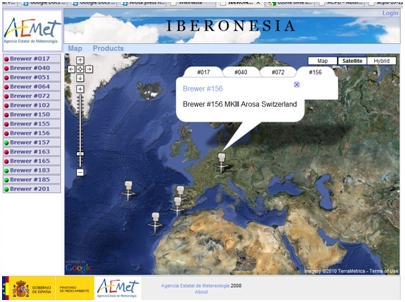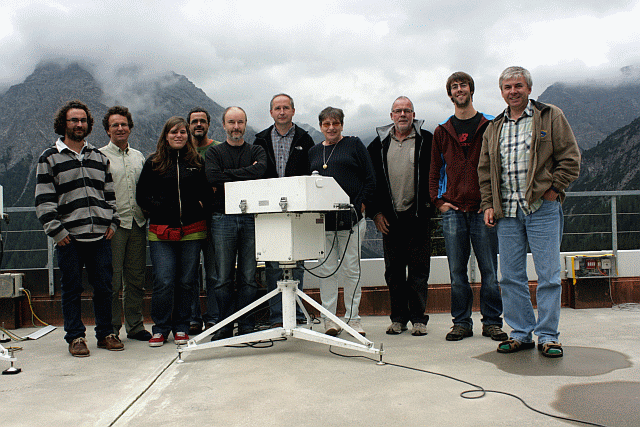The Fifth Intercomparison Campaign of the Regional Brewer Calibration Center-Europe (RBCC-E)
The Fifth Intercomparison Campaign of the Regional Brewer calibration Center for Europe (RBCC-E) was held at Arosa Lichtklimatisches Observatorium (LKO) of Meteo Swiss during the period July 19-30, 2010. Seven Brewer spectrophotometers managed by eleven experts of five countries participated in thethe campaign. The instruments were compared with the RBCC-E travelling reference Brewer#185 for ozone and with the QASUME unit (European UV reference from the World Radiation Center (WRC)) for UV,. Maintenance of the instruments were performed by IOS (International Ozone Services).
The weather was not perfect but finally we obtained enough direct sun measurements to have a successful calibration. Rainy days where used to characterize Brewer instruments, in particular slit functions of single Brewers were determined. This dataset will be used to characterize the stray light effect on the ozone measurements. I addition, a new portable setup for cosine response determination, recently developed by the WRC, was tested.
During the campaign a meeting about calibration services was celebrated with the purpose to unify and standardize the Brewer calibration and reporting. A draft of a standard form wasdesigned and adopted by RBBC-E and IOS. The standardization will allow a quick assessment of the quality of calibrations to Brewer operators and data managers..
This campaign has been financed by the “CEOS Intercalibration of ground based spectrometers and lidars” project. CEOS (Committee on Earth Observation Satellites) coordinates civil space-borne observations of the Earth. NASA (National Aeronautics and Space Administration) and ESA (European Space Agency) are part of this consortium. Regarding ozone, satellite measurements agree within 2-3% globally. The main goal of this project is to improve the accuracy in the determination of total column ozone by ground based observations. Why ? There are three reasons: 1) space borne sensors need very accurate column measurements for providing tropospheric reactive gases amounts, which are key components in global air quality. 2) Within the present context of ozone recovery, with total column ozone trends as small as 1% per decade, the measurements become more demanding for a proper assessment of this recovery. 3) Ozone is an important greenhouse gas that must be accurately monitored for climate model activities. On the other hand some significant differences between Dobson and Brewer ground-based networks still persist. These campaigns are also used to understand and reduce these differences. The RBCC-E, managed by the Izana Atmospheric Research Center (AEMET), plays a leading role in ozone quality assurance for Brewer networks in Europe and Africa.

Intercomparison data is available at the RBCC-E website www.rbcc-e.org

Participants to the V RBCC-E campaign , from right to left, Volodya Savastiouk, Jan Grünenfelder, Ruedi Burren , Bonawentura Rajewska-Wiech , Martin Stanek, Janusz Jaroslawski , Juan Jose Rodriguez, Isabel García, René Stübi, and Alberto Redondas. (Not in the photo: Julian Groebner, Herber Schill, Gregor Huelsen).
(Photo by Volodya Savastiok)







